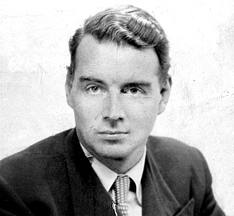Dealing with Double Agents The British Way November 21, 2015
Author: Beach Combing | in : Contemporary , trackback
From the 1920s to the 1940s Britain had perhaps the best spy agencies in the world: this was particularly true of its foreign spy agency, SIS or MI6. Ian Fleming, Graham Greene and even John Le Carré’s fiction carry the distilled essence (albeit sometimes shifted to later times) of British triumph against Nazi Germany, Imperial Japan and in more modified forms against Mussolini’s Italy and the Soviet Union. Britain was, in any case, lucky enough to have a Rolls Royce service for the Second World War. But that perfectly honed vehicle had a serious problem: it would be worse than useless if turned (as it would soon need to be) hard against Stalin. The problem was that the British establishment had several agents and double agents in the system, who while not likely to cause any damage during the Second World War, would become a serious liability in the Cold War. In fact, one of the great tragedies of the early Cold War is that the CIA, impressed by the British achievement, 1939-1945, trusted British intelligence with information that made its way, with terrifying speed, to Moscow. As the 1950s and 1960s went on the British double agents were slowly driven out of their lairs, not least by American suspicions that something was wrong. What is interesting looking back is how the British government chose to deal with its own traitors. Consider the following list.
Two got away. Donald Maclean and Guy Burgess (‘the missing diplomats’) fled the country in 1951: Maclean was about to be unmasked and if the two had been French or American citizens they probably would have been smoked out earlier by the more aggressive counter intelligence agencies of those countries. Given their serial treacheries it is pleasant to report that the unbearable Burgess (pictured) spent a decade in the socialist’s paradise before his death: enough to take in the real value of the country he had betrayed his own for. George Blake was put in front of a judge in 1961, sentenced to 46 years in prison and escaped in 1966, travelling to Moscow where he lives to this day. The other cases were more remarkable. John Cairncross confessed to being a Soviet spy in 1951 and paid for his crimes by losing his civil service job: ouch! However, he later got a position in Rome with the UN’s FAO where he, by some accounts, continued to spy for the Russians.* In 1997 he published and profited by an autobiography The Enigma Spy. Anthony Blunt was revealed to be a Soviet spy in 1964, while he was the Queen’s Surveyor of Pictures. His confession was felt to have been particularly full and he was allowed to carry on in his job! He was only hounded out of his various offices in 1979 when Margaret Thatcher let his name emerge as one of the Cambridge Spies. Kim Philby, meanwhile, was revealed to be a Soviet agent in 1961, but it took the British a year to get around to confronting him with the information. He admitted everything, in Beirut where he was working as a journalist (he had been happily removed from intelligence work). Then, when asked to sign a confession, he said he would need to think about it (!) and fled to Moscow.
The law needs to be just and to be seen to be just: anyone reading this list would have the sense that for a Briton to spy for Stalin was an eccentricity on a par with liking the Baroque or speaking English with thirteen instead of fourteen vowels and dipthongs. The French offed their double agents: extra-judicial car accidents were the preferred method of removal. The Americans, meanwhile, sentenced their traitors to death or very long prison sentences. Can anyone else parallel the unsettling gentlemanliness of the British authorities in the Cold War: drbeachcombing AT yahoo DOT com
*This has never been substantiated.


